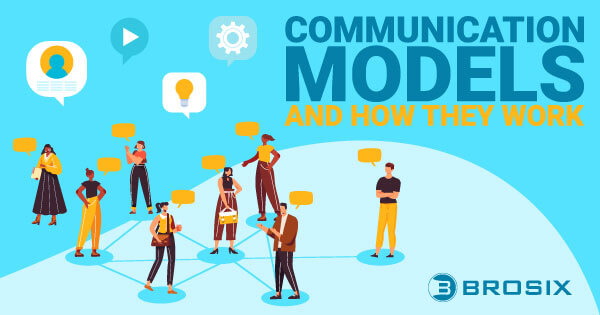Emojis are nothing new. They’ve long dominated digital communication spaces such as email, social media, and free instant messenger chats.
But as workplaces go virtual and communication becomes more relaxed, emojis have begun popping up in professional settings, causing enjoyment for some while others cringe. And as millennials and generation Z – the biggest users of emojis – account for a larger percentage of the workforce, it begs the question: are emojis acceptable at work?
With new ones debuting all the time, emojis let you express thousands of emotions, feelings, and ideas while saving you precious time and characters. They’re a great way to inject some life into your digital communication! But it’s not always so straightforward, especially in the workplace.
Before using emojis in work communication, consider the tips in this article.
Why Do People Use Emojis
Visual communication is nothing new. People have long communicated with pictures and symbols, such as the ancient Egyptians, whose hieroglyphics sometimes resemble modern emojis.
While the first emoticon appeared in 1982 – the rudimentary by today’s standards smiley and colon – improvements in digital technology have paved the way for thousands of emojis. There are even dedicated apps in case you can’t find the emoji you’re looking for.
A single emoji can illustrate multiple emotions, making them more powerful than written words on their own. Take a heart, for example. Adding one to a message communicates warmth, sympathy, and understanding. A monkey, on the other hand, can convey playfulness and good nature.
Simply put: Emojis help convey thoughts and feelings that aren’t easily expressed by plain text.
What’s more, there’s evidence that the human brain can interpret irony and sarcasm when digital icons are paired with written text, making a powerful multimodal form of communication.
Opinions on Emojis Are Mixed
![]()
Like it or not, there’s no clear-cut rule on the use of emojis in business communication. And opinions on their use vary.
Nearly half of young professionals aged 18-29 in a study by SurveyMonkey viewed emojis as work-appropriate. More than half admitted to using emojis regularly, stating they make the workplace more fun and easier.
Professionals 45 and older, on the other hand, largely considered the use of emojis at work as inappropriate and unprofessional.
No matter which side you fall on, there are benefits and drawbacks to the use of emojis in the workplace.
Benefits of Using Emojis at Work
- Add a personal touch to your communication. Emojis allow you to express your human side during digital communication, as well as display emotional intelligence.
- Better express yourself and a range of emotions. An emoji enables you to better convey your emotions during written communication. You can better emphasize messages, injecting some life into conversations.
- Make Communication less rigid. Emojis can help you come across as more approachable. They can take the sting out of communication that’s rigid or could otherwise be misconstrued.
Disadvantages of Using Emojis at Work
- You May Seem Less Competent. Using emojis in the workplace may make you seem incompetent. Emojis are still a relatively new phenomenon and, despite their popularity among youth and millennials, older professionals tend to expect traditional correspondence. What’s more, those who frown upon their use in workplace emails or IMs may find them annoying, and you less genuine as a result.
- Their Interpretation Is Subjective. Just because an emoji seems appropriate to you doesn’t mean your audience will view it that way. For instance, if a coworker shares a joke with you, you may respond with a crying emoji to show that you’re crying from laughter. Your coworker may think you’re upset and wonder whether an apology is in order. Moreover, if you’re sending an emoji to someone using a different device or operating system, that emoji may appear differently to them, possibly leading to a breakdown in communication.
What to Know When Using Emojis at Work
Emojis can be a dynamic addition to your team’s internal communication. But overusing emojis, or using them incorrectly can cause miscommunication, offense, or send the wrong message. Here’s some advice and best practices to consider before using emojis in the workplace.
1. Gauge the Company Culture
Company culture varies wildly between industries, so you’ll need to measure the temperature of your company’s attitude towards emojis. If you’re unsure, ask a coworker about the company’s stance on them. There may even be a company policy.
In more casual workplaces like tech startups, emojis are more likely to be deemed acceptable. But in rigid corporate environments such as finance, emojis can come across as childish or simply inappropriate.
That said, even within the same company, there’s bound to be some discrepancy. Correspondence with the CEO probably shouldn’t be dominated by emojis. But using emojis in a group chat celebrating company successes or employee milestones shouldn’t raise any issues.
2. First Impressions Matter
Avoid emojis when sending an introductory message, whether to a boss, superior or subordinate, a new colleague, or a prospective client. Besides needing to get to know the person, you need to get a feel for their style of communication. An emoji right off the bat could harm your chances of being taken seriously and, consequently, hinder the trust and respect you need to gain for the relationship to flourish.
3. Know Your Audience
Emojis aren’t a universal language. Just as symbols mean different things in different cultural settings, emojis can be interpreted in myriad ways.
Take a thumbs up, for example. Considered a sign of approval in Western culture, it could be construed as vulgar or offensive in the Middle East. There are also demographic and gender differences to consider. While older professionals may deem emojis inappropriate, some may be plain oblivious to them, leading to misinterpretation or confusion. Depending on the audience, certain emojis, or misplaced or ill-time emojis, could be construed as anything from a simple joke, something of a more provocative nature, or even a threat.
A good rule of thumb to keep in mind is Mirroring. Mirroring is when you replicate the style of the individual with whom you’re communicating. If you notice they’re not using emojis, or using them sparingly, it’s best to follow suit.
4. Keep Them Professional
It should go without saying, but certain emojis are inappropriate in the workplace. They could easily be misinterpreted or offensive. Whether in an email or instant message, always keep your use of emojis professional, and only use those that demonstrate intelligence, professionalism, and good nature towards your coworkers.
5. Show Emotional Intelligence
While instant messaging and email are the day’s go-to means of communication, they can leave communication flat and devoid of emotional connection, especially in remote work environments. Mindful and well-timed emojis can alleviate stressful situations and reduce tension. They can also make you seem more open and accessible and go a long way towards making new coworkers feel welcome.
6. Evaluate the Nature of the Communication
In correspondences where the focus is strictly informative, it’s best to remain professional and authoritative. This holds for both email and IMs, as well as group chat and one-to-one communication. It’s also where mirroring comes in handy. By mirroring the other party, you’ll know pretty quickly how formal they are. For example, communication that lacks small talk probably shouldn’t be dominated by emojis.
If you swear by emojis, though, give it some time. As the relationship progresses, or if you’re on a first-name basis with each other, you may find the odd emoji here and there acceptable.
How Businesses Can Use Emojis
![]()
Companies today have tons of tools at their disposal to enhance internal and external communication. Instant messaging apps for business, email, and social media all offer businesses opportunities to employ emojis. Unfortunately, those platforms not only increase the likelihood of communication-related headaches, but opportunities to set the wrong tone.
Emojis for Marketing
Emojis are great for marketing purposes, especially when targeting millennials and younger audiences. What’s more, they can help you craft more succinct messages to more easily fit within social media character limitations. Not to mention, they enable you to show a bit of creativity and good fun with your brand.
Emojis When Communicating with Customers
When communicating directly with customers, such as live chat or email, use emojis sparingly, if at all. As there’s no universal interpretation for emojis, there’s no way of knowing how the recipient will accept it.
Wait until you’ve established a relationship with the other party, or at least until you can identify their communication style. Even then, the wrong emoji could come across as unprofessional or offensive and negatively impact your brand and your business. So proceed with caution.
If you’re looking to improve how your team communicates, try Brosix. An all-in-one instant messenger for business, Brosix provides teams a secure communication space, rich collaboration tools, and robust administrative control on a private team network. And with a range of workplace-suitable emojis, Brosix keeps team communication light, but without the trouble.






